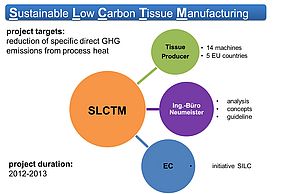Sustained low temperatures during the end of the winter season as well as ongoing programmed plant maintenance produced a high level of tension on the French electric grid at the start of April. To reduce this tension the RTE called for a particularly important load curtailment. At the heart of this process was Energy Pool and its industrial partners.
On the 5th of April, 2013 in France temperatures were about 7 degrees below average for this period. Electricity demand reached 75 GW, over 10 GW above average at this time of the year and more than 2 GW more than the day-ahead prevision. The maintenance season for nuclear power plants was well underway and importation was not an option as other European countries were facing same difficulties.
To meet this exceptionally high electricity demand for the season, and to avoid supply disruptions, the RTE called for the highest load curtailment in France to this date. Following a call for extra curtailment capacity by the RTE on the evening of the 4th April Energy Pool placed more than 500 MW at the disposal of the RTE. At 5 am on the 5th these offers were activated by RTE for a period covering 7 am to 1 pm. Energy Pool aggregated a large panel of curtailment solutions; most was covered by industrial processes such as cement, paper, metallurgy and chemicals.
In general Energy Pool is now capable of offering about 1000 MW of curtailment capacity to the RTE in France. The Everest system developed by Energy Pool and the direct command and control systems used allow Energy Pool to control in real time a portfolio of industrial capacity from their Network Command Center in Chambéry 24 hours a day and 7 days a week. We are technically capable of producing curtailment with a delay inferior to 1 minute and we offer to RTE globally a level of assurance of curtailment of over 95% (equivalent to that offered by production plant).
This unscheduled load curtailment, and Demand Response more generally, is at the heart of the issues currently being discussed regarding the energy transition in Europe. In Europe industrial Demand Response is just starting to be developed; in certain countries, Germany, Spain, or Italy for example budgets of several hundred millions of euros annually are available but the mechanisms for using the flexibility are still limited.
In France the situation is the opposite where the RTE has put into place a series of mechanisms adapted to Demand Response but the budget remains limited (about 30 million euros). Demand Response in PJM in North America was actively pushed by the politicians and now covers about 10% of grid flexibility. In France less than 1% of flexibility needs are covered by Demand Response, and throughout Europe Demand Response competes with existing production assets but often also with a production only mentality
The increase in renewable energy production and the associated effect on Europe’s electricity grids will lead to ever increasing needs in flexibility both for curtailment but also to absorb excess production. There is a need for political action to push Demand Response rather than staying in a viscous circle of covering increasing needs with ever more production capacity. If Demand Response is not pushed to the forefront greatly increased costs for grid infrastructure and management will lead to an important increase in electricity costs for all consumers.
by Antony Parsons, Sales and Marketing Director at Energypool
Demand response record in France
RTE called for a particularly important load curtailment
- by TIM Global Media BV
- November 14, 2013
- 1809 views

































